The Future of PLC Programming and Low-Code
Low-code programming is an emerging technology promising to transform software applications’ development and deployment. Low-code programming, which uses visual modeling tools and pre-built components, enables developers to create and customize applications without the need for highly developed coding abilities quickly and easily. In addition to upending the software development industry, it has a significant impact on industrial automation. This is especially apparent when we talk about PLCs.

The Current PLC Language
Ladder logic was discussed in another blog. PLCs primarily operate and carry out operations using this coding language. The foundation of ladder logic is the outdated programming language C. Coding in languages like C has always called for a variety of prompts that are presented in very particular ways. A skilled coder who knows how to program PLCs is needed for this. The second difficulty is not simply understanding the coding language, but also being able to picture how everything fits together. It's not always easy for lines of code to get along. Sometimes, this has an unforeseen outcome that wasn't anticipated in the original programming. The term "bug" is frequently used to describe this. The ability to identify, pinpoint, and troubleshoot the root of these problems is essential for a good programmer.
What Exactly is Low-Code Programming?
A software development strategy known as "low code" uses little or no coding to create apps and procedures. It uses visual interfaces with simple logic and drag-and-drop features in a development environment as opposed to sophisticated programming languages. The popularity of this quick and easy substitute for traditional software development is on the rise.
Video explanation of low-code and no-code development:
Low Code PLC Application
While the trend of minimal code occurs largely in the field of programming and development. Additionally, the concept is being applied to industrial automation. More precisely, PLCs can adapt the low code paradigm as traditionally they work on a rudimentary programming language.
The Benefits of Low-Code
The use of low-code environments in systems has many benefits. These advantages include faster timeframes, improved production, increased flexibility, and decreased expenses.
Developers produce apps much more quickly than traditional coders thanks to speedier timeframes. Without the need for extensive coding, they assemble and customize applications using pre-built components and visual modeling tools.
Quicker Times- Low coding frees PLC programmers from the limitations of conventional coding techniques and enables significantly faster program input.
Better Productivity- Facilities can run more quickly and effectively than traditional programming with less work and time necessary. A PLC is significantly simpler to program for an engineer.
Increased Flexibility- PLC programmers can easily debug and adjust a PLC's software as opposed to hunting for specific lines of code and rewriting them whenever the scenario calls for it.
Lowered Costs- Since low code programming does not require a PLC programmer to have a deep understanding of coding, it will ultimately be less expensive.
Future Overview
In the end, the future of low code in the field of industrial automation seems brighter than ever. While there are worries about how it may affect the job force in the future. Low-code programming is fundamentally another instance of how automation might eliminate a specialized job. Low code is ultimately incredibly tempting to businesses throughout the sector because to its many benefits, including flexibility, speed, and cost effectiveness, thus it is (at least temporarily) here to stay.
If you need assistance in finding the drive, motor, or servo system you require, just let us know. We have access to a worldwide supply chain network and can locate exactly what you need. We also offer a wide range of other parts and components for a variety of machines and equipment, including:
- Spindle Drives
- Spindle Drive Motors
- Monitors
- Controls
- Circuit Boards
- Power Supplies
- Rotary Tables
- Other Motors
Our qualified customer service representatives can help assist you in locating parts for your machines and equipment, provide you with a quote, and help you set up maintenance, repair, or installation services from one of our qualified technicians. To further demonstrate that you are aware of what to look for, contact us at (956) 246-7411 or send an email to services@cnctoolsllc.com if you need any further assistance.
